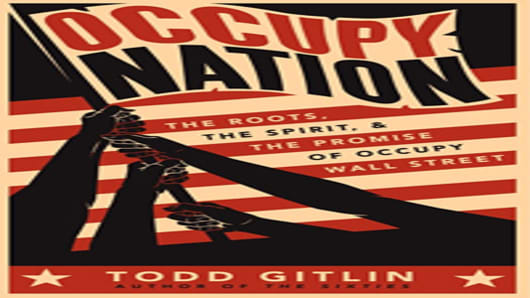GUEST AUTHOR BLOG By Todd Gitlin author of "Occupy Nation: The Roots, the Spirit, and the Promise of Occupy Wall Street."
The Occupy movement is more like a fog-bank than a spot on the map. You can’t tell exactly where it begins and ends, but you know when you’ve entered it. Then, just when you think you’ve got its location fixed, it moves. But it’s out there.
There are four essential things to understand about this mysterious movement that burst upon the scene on September 17, 2011, setting up camp near Wall Street, and fanned out to hundreds of cities from there.
The first is that, although its views are all over the lot, although its leaders don’t want to identify themselves as leaders, although its structure is confusing and its meetings ungainly, the movement’s central thrust is clear: It wants popular control over the plutocrats who brought the economy to its knees, who continue to buy political power and tax loopholes, and who, unpunished and unfazed, lobby incessantly and successfully for their privileges.
The second is that Occupy’s thrust is popular. Its positions largely match America’s sentiments. The country takes issue with the more flamboyant and reckless Occupy tactics, as well as some of its side concerns. Some of the more photogenic participants raise eyebrows. But polls consistently show that such measures as progressive taxation and curbs on the money takeover of politics win the support of supermajorities. As long as economic suffering and injustice are widespread, the movement is cushioned against many of its own excesses.
The third is that during the months when the movement has been out of the headlines, it’s been at work. In several cities, Occupy groups have targeted unjust foreclosures, foreclosure auctions, and evictions—and won victories. They denounce corporate loopholes. They commit civil disobedience at banks.
The fourth is that they have also been making national plans for coordinated activity. This month alone, tens of thousands of activists have been trained in nonviolent tactics. Many, some of them shareholders, crashed the annual meeting of Wells Fargo in San Francisco on April 24, and more than a thousand plan a similar actionat the Bank of America meeting May 9, in Charlotte, North Carolina, charging that B of A savaged millions of home-owners, made out like bandits, and like any ordinary criminal gang deserves to be broken up.
Every week, Occupy groups hold dozens of conference calls, coordinating their actions. On April 25, the day total student debt is projected to reach $1 trillion, there should be a dozen protests against this modern form of indenture, including civil disobedience. On May 1, labor’s traditional day of mobilization, thousands—most likely tens of thousands, including labor, immigrants, and others—will gather for large rallies. Smaller direct actions will disrupt traffic and other features of normal life around New York, San Francisco, and elsewhere.
The activists speak of a general strike. That’s most likely hyperbole. Confrontations with police may overshadow the rest of the day’s activities. But it’s likely that media will then discover that the movement has been dormant, not defunct, even as the news spotlight has moved on. What fills the media’s big tent now is the president campaign, with all its attendant fanfare and sideshows. An election year is a hard time to break through the clutter of news. Journalists pay most attention to Occupiers when they collide with the police in city centers. Downtown disruptions get much more attention than those in the outer boroughs of New York City, for example. But this kind of attention is costly. It focuses attention on the police rather than the oligarchs who push flagrant inequalities. It heightens suspicion that Occupy’s core is too radical for “the 99 percent” who stand to gain from a fuller measure of economic justice and a moral revolt in the name of now-thwarted democracy.
For all its divisions and fumbling, the movement has already left an imprint. Without Occupy, it’s unlikely that 55% of Citigroup shareholders would have revolted recently against the $15 million pay bundle that Citigroup’s compensationcommittee wanted to tender CEO Vikram Pandit for 2012—a rather extravagant reward for a year when the company’s share price fell 20%. Without Occupy, it’s unlikely that the New York Times would have reported that revolt in its lead column on page one. Occupy encourages Barack Obama to unfurl populist banners against one-percenter Mitt Romney—surely a winning campaign move.
Occupy is gambling is that it can broadly and intelligently mobilize enough of the 99 percent to change the momentum of American politics over the long haul. Whether that gamble pays off is partly up to its acumen, but also up to the multitudes. How much will they care? What will they do to change a political system that thwarts them at every turn?
Todd Gitlin, Professor of Journalism and Sociology at Columbia University, is the author of 15 books, including the just-released "Occupy Nation: The Roots, the Spirit, and the Promise of Occupy Wall Street."
Email me at bullishonbooks@cnbc.com — And follow me on Twitter @BullishonBooks


